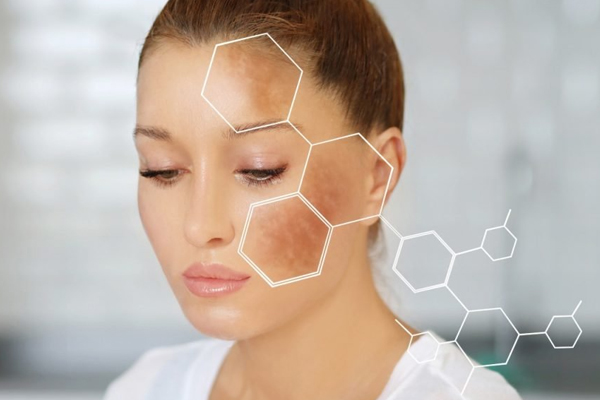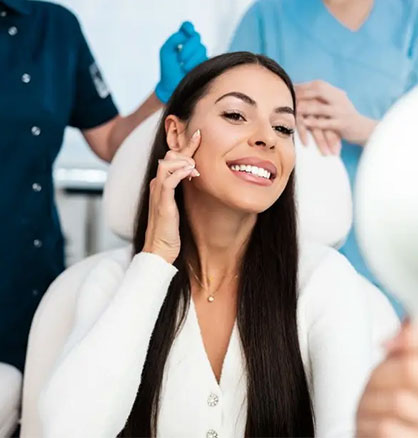- HOME
- ABOUT
- TREATMENTS
- BEFORE AND AFTER
- BLOG
- BOOK AN APPOINTMENT
- CONTACT
Uneven skin tone, characterized by dark spots or patches, is a common concern for many people. Pigmentation issues such as sun spots, age spots, and melasma are often the result of excessive melanin production in the skin, causing visible discoloration. While these pigmentation problems are not harmful, they can affect a person’s confidence. Fortunately, various treatments and preventive measures are available to address these concerns. In this article, we will explore how to treat pigmentation, including sun spots, age spots, and melasma, and the best practices to prevent these issues.
Pigmentation refers to the coloring of the skin, which is determined by melanin, a pigment produced by melanocytes in the skin. When melanin is overproduced in certain areas, it leads to hyperpigmentation, causing dark spots or patches on the skin. Some of the most common types of hyperpigmentation include:

Sun Exposure
UV rays from the sun are the primary cause of increased melanin production, leading to sun spots and age spots. Prolonged exposure to the sun without proper protection can exacerbate pigmentation issues, making them more noticeable over time.
Hormonal Changes
Hormonal fluctuations, especially during pregnancy or while taking oral contraceptives, can trigger melasma. This form of pigmentation is often called the "mask of pregnancy" as it frequently affects pregnant women.
Skin Inflammation
Post-inflammatory hyperpigmentation (PIH) can occur after skin injuries, acne, or other inflammatory skin conditions. The skin produces excess melanin in response to the inflammation, leading to dark spots that can persist for months if untreated.
Aging
As the skin ages, it becomes more prone to pigmentation problems. Age spots are a result of cumulative sun damage over the years, combined with the natural aging process that causes the skin to lose its ability to repair itself effectively.
Genetics
Some individuals are more genetically predisposed to pigmentation issues than others. For example, people with darker skin tones may be more prone to developing melasma or PIH due to their skin’s higher melanin content.
Treating pigmentation effectively requires a combination of professional treatments, over-the-counter products, and lifestyle changes. Here are some of the most effective treatments for pigmentation removal:
Topical Treatments
Hydroquinone: This skin-lightening agent is commonly used to treat hyperpigmentation by reducing melanin production. Hydroquinone is available in both over-the-counter and prescription-strength formulations, depending on the severity of the pigmentation.
Retinoids: Retinoids, such as tretinoin, are derived from vitamin A and are effective in increasing skin cell turnover, which helps fade dark spots over time. They are often used in combination with other treatments to enhance results.
Vitamin C: Vitamin C is a powerful antioxidant that inhibits melanin production and helps brighten the skin. Regular use of vitamin C serums can help lighten pigmentation and improve skin texture.
Alpha Hydroxy Acids (AHAs): AHAs, such as glycolic acid and lactic acid, work by exfoliating the skin, removing dead skin cells, and promoting the growth of new, evenly pigmented skin. AHAs are commonly found in chemical peels and skincare products designed for pigmentation.
Chemical Peels
Chemical peels involve applying a chemical solution to the skin to exfoliate the top layer, removing pigmented skin cells. Depending on the depth of the peel, chemical peels can address superficial pigmentation (like sun spots) or deeper pigmentation (like melasma). Glycolic acid and salicylic acid peels are popular choices for pigmentation treatment.
Laser Therapy
Laser treatments, such as Q-switched lasers and intense pulsed light (IPL), target and break down pigmented areas of the skin without damaging surrounding tissues. These treatments are highly effective for removing sun spots and age spots, as they selectively target melanin deposits. Laser therapy is especially useful for individuals with stubborn pigmentation that does not respond to topical treatments.
Microdermabrasion and Dermabrasion
Both of these treatments involve exfoliating the skin to remove the outer layer of dead skin cells. Microdermabrasion is less invasive and can be used for treating mild pigmentation issues, while dermabrasion is a more intense treatment used for deeper pigmentation and scarring.
Prescription Medications
In some cases, dermatologists may prescribe combination creams that include hydroquinone, retinoids, and other lightening agents. These creams are typically used for treating melasma and more severe pigmentation problems under medical supervision.
Prevention is crucial when it comes to pigmentation issues, especially since many of these conditions are triggered by external factors like sun exposure. Here are some preventive measures to consider:
Daily Sunscreen Use
The most important step in preventing pigmentation is to wear broad-spectrum sunscreen with an SPF of at least 30 every day, regardless of the weather. Sunscreen should be reapplied every two hours, especially after swimming or sweating. This helps protect the skin from UV damage and prevents the formation of sun spots and age spots.
Protective Clothing
Wearing wide-brimmed hats, sunglasses, and long-sleeved clothing can shield your skin from harmful UV rays. This reduces the chances of pigmentation issues becoming worse over time.
Avoiding Excessive Sun Exposure
Limit your time in the sun, especially during peak hours (10 a.m. to 4 p.m.). When outdoors, seek shade whenever possible to further minimize sun damage.
Avoid Hormonal Triggers
If you are prone to melasma, consult your doctor about alternative methods of contraception that may reduce hormonal fluctuations. Hormonal therapy should be monitored closely to prevent pigmentation issues from worsening.
Pigmentation issues, such as sun spots, age spots, and melasma, are common skin concerns that can affect the way your skin looks and feels. Thankfully, a range of treatments is available, from topical agents to laser therapy, to address these problems. By combining effective treatments with preventive measures like daily sunscreen use, you can reduce pigmentation and achieve a more even skin tone. If you struggle with persistent pigmentation, consult Dr Sheenam, Dr Sheenam, a dermatologist for personalized advice and treatment.
Please fill up the Form below so that we can get
in touch with you at the earliest.

Call us:
+91-90416-25252
Visit Clinic:
Dr. Sheenam's Skin, Hair & Laser Clinic
# 1, Sector 21 - D
Chandigarh
Email:
drsheenamskinclinic@gmail.com